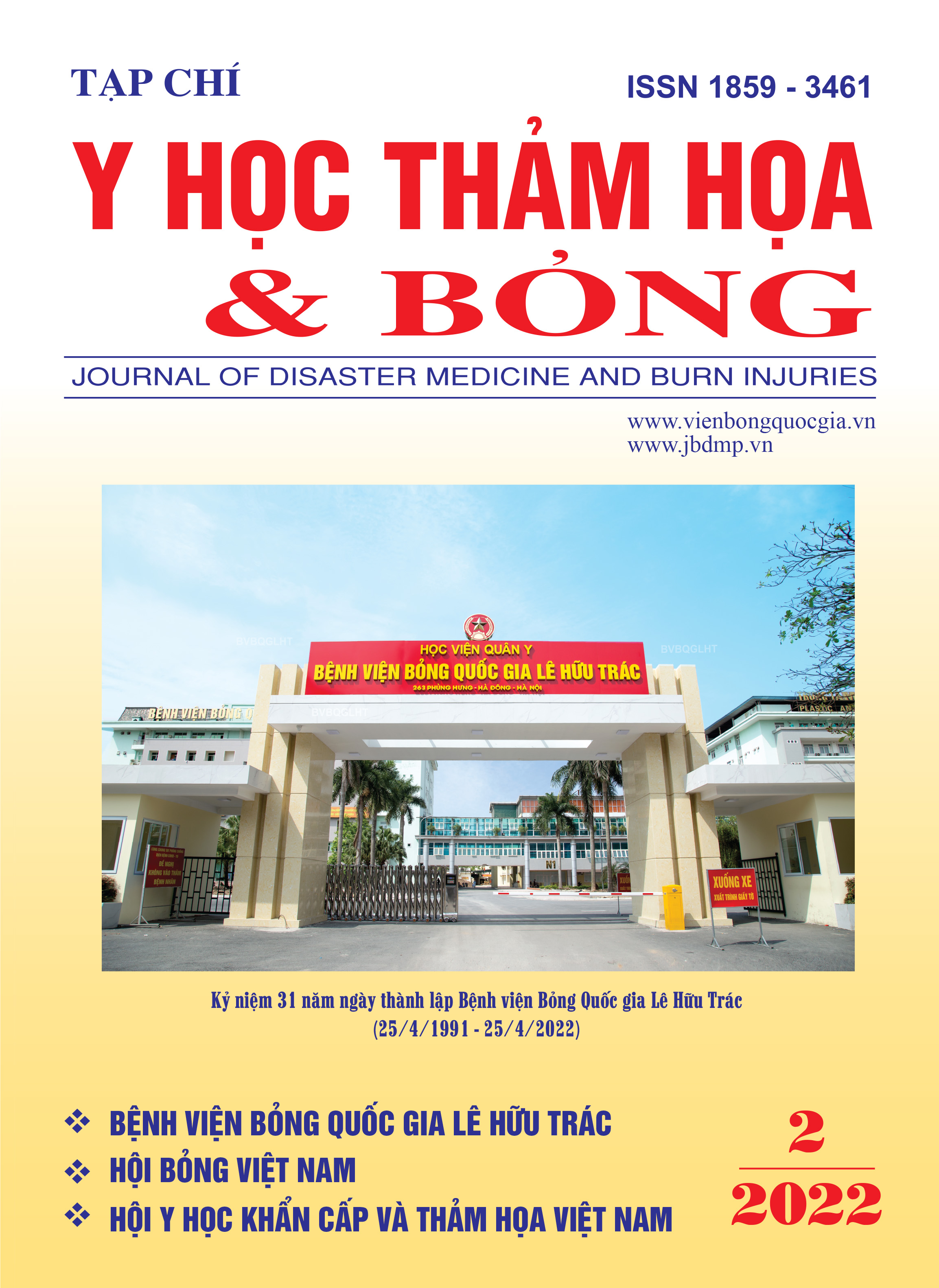Prognostic values of the de ritis index at admission for severe burn patients
Main Article Content
Abstract
Objectives: To evaluate the prognostic value of the De Ritis index at the time of hospital admission for mortality in patients with severe burns.
Subjects and methods: Prospective study on 121 adult burn patients, burn area ≥ 20% TBSA hospitalized within 72 hours after a burn at National Burn Hospital from 1 January 1, 2021 - December 31, 2021. The evaluation criteria included patient characteristics, De Ritis ratio (AST/ALT) at admission and the relationship of this index with burn injury characteristics, complications and outcomes.
Results: The average De Ritis ratio was 2.28 ± 1.57. This index was significantly higher (p < 0.01) in the group with electrical burns, and deep burn area ≥ 20% TBSA. Age, sex, burn area, and inhalation ịnury were not significantly associated with this index. De Ritis index was also significantly higher in the patients with ARDS, septic shock, multiple organ failure and death. Multivariate analysis confirmed that along with the area of deep burns, inhalation ịnury, the De Ritis index was an independent predictor of mortality with a good prognostic value (AUC = 0.72; cut-off point: 2.85; sensitivity 70.83%; specificity: 77.32%).
Conclusion: In patients with severe burns, the admission De Ritis ratio was elevated and independently associated with mortality. It is necessary to have a reasonable treatment regimen for severe burn patients with a De Ritis ratio ≥ 2.85 to minimize complications and the risk of death after burns.
Article Details
Keywords
Severe burns, De Ritis index
References
2. Rief P., Pichler M., Raggam R., et al. (2016) The AST/ALT (De-Ritis) ratio: a novel marker for critical limb ischemia in peripheral arterial occlusive disease patients. Medicine, 95 (24),
3. Ewid M., Sherif H., Allihimy A. S., et al. (2020) AST/ALT ratio predicts the functional severity of chronic heart failure with reduced left ventricular ejection fraction. BMC Research Notes, 13 (1), 1-6.
4. Yu J., Kim H. Y., Kong Y.-G., et al. (2021) De Ritis ratio as a predictor of 1-year mortality after burn surgery. Burns, 47 (8), 1865-1872.
5. Sookoian S., Castaño G. O., Scian R., et al. (2016) Serum aminotransferases in nonalcoholic fatty liver disease are a signature of liver metabolic perturbations at the amino acid and Krebs cycle level, 2. The American journal of clinical nutrition, 103 (2), 422-434.
6. Kim H. Y., Kong Y. G., Park J. H., et al. (2019) Acute kidney injury after burn surgery: preoperative neutrophil/lymphocyte ratio as a predictive factor. Acta Anaesthesiologica Scandinavica, 63 (2), 240-247.
7. Steininger M., Winter M.-P., Reiberger T., et al. (2018) De-Ritis ratio improves long-term risk prediction after acute myocardial infarction. Journal of clinical medicine, 7 (12), 474.
8. Heng J. S., Clancy O., Atkins J., et al. (2015) Revised Baux Score and updated Charlson comorbidity index are independently associated with mortality in burns intensive care patients. Burns, 41 (7), 1420-1427.
9. Hu X., Yang W.-X., Wang Y., et al. (2020) The prognostic value of De Ritis (AST/ALT) ratio in patients after surgery for urothelial carcinoma: a systematic review and meta-analysis. Cancer cell international, 20 (1), 1-8.
10. Tan X., Xiao K., Liu W., et al. (2013) Prognostic factors of distal cholangiocarcinoma after curative surgery: a series of 84 cases. Hepato-gastroenterology, 60 (128), 1892-1895.


